What Is Eco Travel? Benefits, Places & Trends
Table of Contents
ToggleDo you ever ask yourself or with your circle “What is Eco Travel”?
Have we ever thought about why we don’t like overcrowded destinations?
Why do we prefer destinations that are yet untouched?
The answer to this question is because the places exploited and destroyed by human touch doesn’t look as appealing as the untouched ones. We have destroyed countless places on earth with irreversible damage.
This is high time we focus on the well-being of mother nature and undo the damage we have caused. Tourism is one such industry that is carbon-heavy even though it doesn’t look like it. So to reduce the carbon weight on tourism, eco-travel, and eco-tourism is the solution.

Eco Travel is an umbrella world which covers all the terms like sustainable tourism, eco-tourism, green travel, etc. The International Ecotourism Society (TIES) defines Eco-friendly travel as “responsible travel to natural areas that conserves the environment, sustains the well-being of the local people and involves interpretation and education”.
Major popular natural tourist destinations that are overcrowded by travellers are depleted. The environment is affected, the local communities are destroyed, because of us travellers.
The best traveler is an eco traveler, the one who prefers the green way of traveling and destroying the least.
What Are The Eco Travel Benefits?
Now that you know What is Eco Travel, you might ask – why shall I be bothered with it? Why do I need to follow this? This simple answer is because we need to focus on sustaining the local resources, culture, and keep the place more natural, more authentic for people living there, and for the next generation to appreciate its beauty. We can’t just keep destroying a beautiful place for our own interest when this can be easily avoided.
With the expansion of the tourism industry, eco-tourism is not just important, but essential.
If we look into how ecotourism is beneficial, we see that it benefits us (the traveller), the place you are visiting, the local communities, and the environment.
- How Eco Travel Benefits You?
Eco-tourism or eco-travel is beneficial for the traveller as well. It saves you a lot of money overall. Although some of the eco-travel practices and options might look expensive, overall it saves your money.
It also encourages you to interact and know more about the culture and tradition without compromising on the adventure. It increases your understanding about that destination deeply. So it’s an experience in itself that you’ll cherish.
- Positive Impact On Local Communities

It promotes and conserves traditional local practices. It encourages local people and creates jobs for the locals. It promotes locally crafted goods, locally grown farm products, rather than imposing the international norms and standards. The culture and tradition is preserved, hence not lost.
- Local Economic Improvement
Countries and places that are solely dependent on the tourism industry, their livelihood revolves around tourists. Economic condition of the locals depends on tourism. Ecotravel is not just about conserving the environment, but also focuses on supporting the communities. Ecotravel or ecotourism directly benefits the economic conditions of the locals.
- Benefits To The Environment
Eco-travel encourages the conservation of natural habitats and native species. It also increases environmental awareness. It educates people about practices that are beneficial for the environment. Eco-tourism expands one’s understanding of ecosystems and the environment. Eco-travel encourages expanding the tourism industry without having the environment to pay for it, hence saving the wildlife and natural habitats.
- Conservation Of Natural Resources
Eco-travel supports the idea of natural resource conservation and management by reducing the exploitation of natural resources. These resources are the source of income for local communities, they depend on the local resources for earning bread.
9 Best Tips For Eco Travel
Now that you are an informed traveler who understands eco traveling, you would ask how can I be an Eco Traveller? If you are wondering that being eco-friendly would cost you a fortune, then you are wrong mate! Being eco-friendly doesn’t empty your wallet.
There are small vital steps that can reduce our carbon footprint. And if we, as a species, come together and take up these steps, we can save our beloved planet earth from getting destroyed.
Here are some simple tips for you to make a very vital change.
1. Your Drinking Water

Avoid buying drinking water in plastic bottles and plastic packages. You can carry one or two bottles that you use in your home and then use it. There are plenty of water refill stations that guarantee safe drinking water.
2. Support Local Market And Food

You don’t need fancy restaurants like McDonald’s, KFC, or Starbucks. Instead always prefer local food, not only is this sustainable for the local environment and communities but also you will get to taste their traditional delicacies straight outta their local spices. Go to local shops for buying anything, like gifts or anything that you want to take home as a memory.
Read more: Hidden Hill Stations In India
3. Choose Your Flight Preference Wisely

Always prefer railways over flight. Aeroplanes cause carbon emission 50 times more than that of a car per mile. Just think about the tonnes of carbon you can save just by avoiding flights. In case you have to get there by air, choose economy class. And if you are travelling by flight try to make your stay longer.
4. Be More Animal-Friendly

Interact with animals in a wildlife sanctuary or National parks more friendly and maintain distance. Just like you don’t like an intruder in your home, the animals won’t like you at their home, which is the natural environment they are living in.
5. Go For Eco-Friendly Option

If you are travelling with a travel agency ask for a greener way or eco-friendly options they have in their package. If a travel provider says they don’t offer any such options then ask why? Or change the travel provider.
6. Do Not Disturb In The Hotel Room

Hang a Do Not Disturb sign outside your room or talk over the counter for less room services. You do not need a clean bed sheet, clean towel every day, you don’t need to get your room cleaned every day so you can opt-out of all these facilities. Don’t ask for a cleaned towel when you don’t need it. This reduces the carbon footprint you leave behind.
The chemicals used, the electricity used to vacuum clean your room is a lot. And guess what, many hotels also offer discounts and other privileges for choosing not to have your room cleaned. Also, don’t forget to switch off the lights, TV’s, Air Conditioners and fans when you don’t need them. You don’t have to use it just because it’s complimentary with the room
7. Make Your Baggage Lighter

Each kilogram counts when you’re travelling by air. The heavier it gets, the more fuel it needs as a result of more carbon emission. Because the aeroplane has to fly, and the heavier it is, the more energy it would require to fly above the ground, makes sense right? So, make your baggage as light as possible, don’t pack unnecessary things.
8. Getting Around In A Greener Way

Public transport should be the most preferred way to get around once you reach there. There is no need for a private transport which would have a huge load on carbon emission and also a load on your wallet. Travelling via public transport like buses, trains would let you interact with the locals more and also your spent money will support locals.
And if buses or trains are not an option then you can go for a bike. Bikes are available for rent at many destinations, you can rent them and roam around like a free bird and explore at its best. Cycle is the most sustainable way of transport, you can roam around in the locals by renting a cycle, or simply asking for a favour from local people.
9. Avoid Plastic Bag

Last point, but not the least. Do not ask for plastic bags while shopping in any tourist spot. Ask for paper bags if available, if not then do not ask for any bags. That’s not an absolute necessity, you can still pack your goods in the luggage you came with.
Top 10 Best Eco Travel Destinations In India
1. Mawlynnong Village, Meghalaya

Mawlynnong village is situated about 90km from Shillong in East Khasi Hills district of Meghalaya. It is famous as the cleanest village in Asia. This place is also known for its natural beauty, picturesque views, rich biodiversity and lush green forests.
The living roots bridge is a must-see, and is now a UNESCO World Heritage site. The village has adopted the use of bamboo dustbins all over the village. They banned plastic completely.
Best time to visit: the weather is pleasant throughout the year, but monsoon is the best time to visit the cleanest village in Asia.
Places nearby: Living root bridge, Dawki river, Bophill Falls, Mawlynnong Waterfall
Things to do: trekking from Mawlynnong to Living root bridge.
2. Coorg, Karnataka

Coorg, also known as Scotland of India, is a hill station in Karnataka. Famous for its rich flora and fauna and gushing waterfalls, misty hilltops, lush green coffee and cardamom plantations. This place offers a heavenly view of the misty hills, and a charming natural beauty.
The Kodava community is ancient and rich, specializes in martial arts and other techniques.
Best time to visit: September to June is the best time to visit Coorg. Avoid monsoons because of heavy rainfall and chances of landslides. March is the best time if you’re going for trekking.
Places nearby: Abbey Falls, Talakaveri, Nagarhole National Park, Namdroling Monastery.
Things to do: River rafting, coffee plantation tour, trekking, etc.
3. Thenmala, Kerala

When it comes to eco travelling, or eco-friendly destinations, Thenmala is a must-see. Thenmala is India’s first planned eco-tourism spot. It is divided into three zones, leisure zone, for people who love to walk around, culture zone, for food lovers, and enthusiastic about tasting various traditional dishes, adventure zone, a paradise for adventure lovers.
This place is famous for its natural beauty, lush green forests and serene waterfalls.
Best time to visit: December to February is the ideal time to visit Thenmala due to low humidity, clear sky and pleasant temperature.
Places nearby: Butterfly safari, deer park, leisure zone, culture zone, adventure zone.
Things to do: Mountain biking, trekking, rock climbing, rappelling, rope bridging.
4. Khangchendzonga National Park, Sikkim

The park is all about lakes, glaciers, valleys, caves, rivers and plains. About 30% of the area of Sikkim comes within the control of the National Park. This place is blessed with rich biodiversity, plenty of flower species, and rare mammal species like red panda, musk deer, snow leopard, etc. The views are breathtaking and soothing.
It has 1/3rd of India’s flowering species and about half of the country’s bird species. You won’t believe unless you witness the beauty with your own eyes.
Best time to visit: March to May and September to November is the best time to visit the National Park. The weather is pleasant and very comfortable during this time, also you will get to see most varieties of species during this time.
Places nearby: Goecha La, Khecheopalri Lake, Kanchenjunga Falls, Zemi Glacier, Rathong Glacier.
Things to do: Hiking, trekking.
5. Lahaul – Spiti, Himachal Pradesh

Lahaul Spiti is a district in Himachal Pradesh, formerly two separate districts. This place is at 4,270m above sea level and the temperatures fall even below minus 30 degree Celsius. The climate is temperate and extreme. Local people here are very lively and encourage to save the unique ecosystem they are blessed with.
Best time to visit: Spring to summer is the ideal time to visit Spiti. So, March to June is the best time. Because winters are pretty harsh and extreme.
Places nearby: Chandratal lake, Kunzum pass, Pin Valley national park, Dhankar lake, Dhankar monastery.
Things to do: Trekking through pin Parvati pass and biking through trails.
6. Khonoma Village, Nagaland

Khonoma village is just 20 km from the state capital Kohima and is the home to the Angami Naga tribe. The village is also known as Khwunoria and is at least 700 years old. It is surrounded by lush green mountains.
Native tribes of the village, the Angamis took the initiative to conserve the natural resources and their community from the outside world. It has successfully made an enormous impact on Nagaland tourism by encouraging tourists to be more cautious about the environment.
Read more: Lifetime Destinations In India
Best time to visit: Any time of the year is good for this destination as the weather is cool and soothing throughout the year.
Places nearby: Khonoma Nature Conservation and Tragopan Sanctuary (KNCTS), Dzukou peak, Japfu peak, Kohima Museum, Touphema village.
7. Parambikulam Tiger Reserve, Kerala

Parambikulam Tiger Reserve is another eco-friendly destination in South India. The reserve is well protected from human intruders. The core of the Tiger reserve is a No Entry region for jungle safaris. The livelihoods of indigenous communities are supported by eco-tourism.
Local communities are involved in making hand-made bamboo products, natural honey sources, paper bags, recycled plastics. All of these goodies are available in shops inside the Tiger reserve, and the revenue is used directly for the welfare of the community and betterment of the environment.
Best time to visit: you can visit any time of the year. But monsoons are usually avoided, and October to March is the most loved time.
Things to do: Jungle safari and trekking are some of the things to do in Parambikulam Tiger Reserve.
8. Sitlakhet, Uttarakhand

Sitlakhet is situated in Almora district of Uttarakhand, at an elevation of 3,870m. This makes for a perfect summer destination in the heart of Kumaon Himalayas. This place is beautifully placed in the lap of nature. This place offers splendid panoramic views of the snow-capped Himalayas. One can enjoy soulful walks through the pine forests and let nature do the therapy.
Best time to visit: May to October is the perfect time to appreciate its beauty.
Places nearby: Bhalu Dam, Syahi Devi temple, Dhokaney Waterfalls.
Things to do: Hiking to Syahi Devi temple is very enjoyable. Other activities include nature walks, mountain biking.
9. Kumbalangi, Kerala

Kumbalangi integrated tourism village in Kerala is an island in the backwaters. It offers a vibrant culture of God’s Own Country. This place is 15 km from Kochi and is the best place to explore if you’re a nature lover. Fishing is the main occupation of local people living here. This is an offbeat destination in eco-tourism destination list, villagers here encourage tourists to have a comfortable stay at their home.
Best time to visit: winter is the best time to visit this beauty that is from October to March.
Places nearby: Artists village or Kalagramam, Fort Kochi, Thrippunithura, Mattancherry.
Things to do: try your hand at fishing, boat rides in the backwaters.
10. Matheran, Maharashtra

Matheran is situated in Raigad district of Maharashtra at 800m above sea level. This place has beautifully preserved architectural masterpieces. Matheran is a pollution-free offbeat hill station which makes for a perfect getaway for couples and weekend travellers, provides a serene environment, fresh air cutting through your hairs. This is a beautiful place with picturesque views of the lush green hills and fresh air by the lake. This place is a paradise for nature lovers.
Best time to visit: the weather is very pleasant throughout the year, but try to avoid the monsoons due to heavy rainfall. So October to May is the best time to visit this gem.
Places nearby: Louisa Point, Prabal Fort, Alexander point, Garbett point, Charlotte’s Lake, etc.
Things to do: trekking, picnic, nature walks.
Top 10 best Eco Travel destinations in the world
Wanna spend a week or two amidst of World’s best natural beauty? Wanna get some adventure fun? Then, you are in the correct place. Let’s get the best of nature where ecotourism is the main focus now. Let’s travel without destroying the ecosystem.
1. Costa Rica

Costa Rica is the first name when it comes to Ecotourism or eco-friendly destinations or sustainable travelling. Costa Rica is a landmark in this area, it is the most successful ecotourism destination in the world. The country is famous for pristine natural beauty – panoramic beaches, lush-green rainforests, volcanoes, wildlife variety etc. this south American country alone supports 5% of the world’s biodiversity.
This is the biggest eco-tourism destination with 98% of its electricity coming from renewable resources, 8 biological reserves, 20 national parks, 800 miles of endless coastline and many more to offer.
Best time to visit: December to April is the ideal time to visit this place when the country experiences a dry season.
Places to visit: Monteverde Cloud Forest Reserve, Arenal Volcano, Manuel Antonio National Park, Playa Jaco, Tortuguero National Park, Corcovado National Park, Rincón de la Vieja, San Jose, Tamarindo.
Things to do: stay at eco-lodges is amazing to experience if you are in Costa Rica.
2. The Galapagos Islands

Galapagos is the very place where Charles Darwin went on his voyage and made remarkable discoveries about nature and species. It is a volcanic archipelago in the pacific ocean, a part of the Republic of Ecuador. Galapagos Island was declared as the first Natural World Heritage in 1978.
The destination is isolated from the rest of the world, with a unique and exotic variety of fauna, lush green fertile lands. 90% of the land is under National Park territory. The coastline is pristine and very enjoyable during the warm season.
Best time to visit: Warm and wet season (December to June) is the best time to visit this archipelago.
Places to visit: Los Túneles, Sierra Negra, El Garrapatero, Darwin & Wolf island, Reserva El Chato, South plaza island, Tortuga Bay, La Lobería, Parque Nacional Galápagos, Las Grietas.
Things to do: Snorkeling, Diving, Bird watching, etc.
3. Palau

Palau is another archipelago with 340 coral and volcanic islands, that’s a lot! It is a part of the Micronesia region in the western pacific ocean, and is quite isolated, for that reason for many years it was saved from destruction by mass tourism. Palau is famous for its oceans, vibrant coral reefs, pristine beaches, lush green forests along the coastline, and obviously a known diving destination.
Palau made its first move towards ecotourism by banning fishing in various reefs, extending more than 500miles. The natural beauty of Palau is incredible and untouched by humans. It has adopted The Palau Project, as a part of the Blue Planet United, which brings people from abroad to learn about the island, hence making them more aware about the ecosystem and its preservation.
Best time to visit: All round the year is good for Palau. But if you’re looking for diving then November to April is the best time due to great visibility.
Places to visit: Rock Islands, Jelly-fish lake, Ngardmau Falls, Etpison Museum, Kayangel Island, Stone monoliths, Mandarin fish lake, Oasis Palau, Milky way.
Things to do: Diving, Sea Kayaking, Swimming, Shopping
4. New Zealand

New Zealand is a very beautiful country, all about endless landscapes touching the horizons, subtropical forests, volcanic plateaus, rolling hills, Dolphins, fjords and many more. There are plenty of must-see ecotourism destinations in New Zealand. The country has kept one-third of its total land for National parks, heritage sites, and reserves which has contributed to eco-tourism.
Best time to visit: the best time is from November to March, when the country experiences summer.
Places to visit: Bay of Islands, Milford Sound, Auckland, Waiheke Island, Queenstown, Christchurch, Te Whakarewarewa Geothermal Valley.
Things to do: Skiing, river rafting, boat rides, biking, bungee jumping, afternoon cruise, Dolphin watching, hiking and many more.
5. Peru

Peru is a destination that is present in almost every travellers bucket list. Machu Picchu is one of the seven wonders of the world and is situated in Peru. But the reason why Peru should top your bucket list is not limited to Machu Picchu. Peru is the home to three of the world’s largest protected rainforests – Manu Biosphere Reserve, the Tambopata National Reserve, and the Pacaya-Samiria National Reserve.
Peru is also the place where the magnificent Rainbow mountains stand proud. The government has regulated entry to these protected areas, but still, deforestation is a challenge yet to be overcome.
Best time to visit: Between May to October, when it is the dry season in New Zealand, is the best time to visit New Zealand.
Places to visit: Machu Picchu, Cusco, Lima, Lake Titicaca, Arequipa, Colca Canyon, Puno, Pisac, Iquitos, Paracas, Miraflores, Trujillo, Manu National Park, Chan Chan, Urubamba, Amantani, Huascaran National Park etc.
Things to do: Trekking, Hiking, paragliding, parasailing, sandboarding, dining in Lima and watching famous Pink dolphins in Amazon are some of the many things to do in Peru.
6. Norway

Norway is the country surrounding mountains, beautiful coastal fjords, and glaciers. The country has successfully regulated many things to ensure sustainable tourism and sustainable living. The tourism industry is extensively influenced by the sustainable form of tourism. Fjords Norway is one of the four destinations of the Global Sustainable Tourism Council’s program.
The destination is known for skiing, hiking, and fishing. Activities like hunting, fishing and drilling for oil are highly regulated. And also, Norway is one of the very few countries that is blessed with the phenomenal northern lights.
Best time to visit: May to September is a nice time to pay a visit to Norway, it is spring to autumn during that time.
Places to visit: Oslo, Bergen, Tromso, Stavanger, Geirangerfjord, Flam, Lofoten, Alesund, Sognefjord, Lysefjord, Hardangerfjord, Reine, Kirkenes, Svolvaer,
Things to do: Ski jumping, mountaineering, hiking, experiencing northern lights, fishing, kayaking, bird watching.
7. Bhutan

Bhutan is a small country in South Asia, surrounded by the Himalayan range. Known for its rich Buddhism culture, monasteries, dzongs, and dramatic landscapes. Bhutan is not a known destination when it comes to eco-tourism, but the country is stepping into it slowly and in a controlled manner.
People living in this Buddhist kingdom are very considerate about preserving their unique rich culture and conserving the nature they are blessed with.
Best time to visit: March to May is the perfect time to visit Bhutan; the weather is sunny, pleasant and breezy.
Places to visit: Thimphu, Paro, Punakha, Trongsa, Phuentsholing, Manas National park, Wangdue Phodrang, Trashigang, Samdrup Jonkhar, Do Chula, Jigme Dorji national park, Laya, Taktsang monastery.
Things to do: Hiking, trekking, witness masked dance form, white water rafting are some of the things to experience in Bhutan
8. Patagonia

Patagonia is situated in the southern end of South America, shared by Argentina and Chile. This place is not a very popular destination. But don’t go after names, it has many things to offer starting from glaciers, snow-capped mountains and the Torres del Paine National Park at the top of all of it.
This place is one of the most unspoilt places on earth – the azure lakes, glaciers, rivers and forests. This place is a perfect getaway for nature lovers and eco-travel enthusiasts.
Best time to visit: November to March is the ideal time to visit Patagonia. The weather is perfect for exploring Torres del Paine National Park.
Places to visit: Torres del Paine National Park, Cerro Tronador, Refugio Frey, Chaitén’s Haunting Beach, Puyuhuapi Bay, Queulat Glacier, Cerro Castillo Glacier, The Marble Caves, Exploradores Glacier, The O’Higgins Glacier, No-Man’s Land, Cerro Torre, Paso Viento, Condor Lookout, Refugio Dickson, Paso John Gardner, French Valley.
Things to do: hiking, rock climbing, horseback riding, ice-climbing, ice treks, whale-watching are some of the experiences you must have in Patagonia.
9. Slovenia

Slovenia is a central European country, famous for its serene lakes, majestic mountains, emerald fields, breathtaking landscapes. Slovenia is also famous for vineyards. The country has 40 Parks and reserves spread all over the country. About 60% of its land is covered in forests, about one-third of the country is agricultural land, and about 54% of the land is protected land.
Best time to visit: the destination is enjoyable year-round. The dry cold months (December to March) are snowy, and the warm months (May to September) are sunny, fresh, bright, blooming. Warm months are perfect if you are interested in adventure sports.
Places to visit: Maribor, Lake Bled, Postojna Cave, Triglav National Park, Lake Bohinj, Bled Castle, Vogel, Vintgar Gorge, Predjama Castle, Preseren Square, Soča River.
Things to do: Hiking, mountain climbing, cycling.
10. Kenya

Kenya is the home to many exotic range of natural resources, with more than 50 national parks and reserves. It is an African country, sharing its coastline with the Indian Ocean. Kenya is famous for its grasslands full of wild animals alike, rhinos, lions, giraffes, etc. but there are more reasons why this destination is one of the must-see destinations when it comes to eco travelling.
The country has beautiful coral reefs, beaches, a variety of birds, mountains and many more. Kenyan government made many laws to safeguard its native flora and fauna, supporting local livelihoods. The country is on its way to top ecotourism destinations of the world.
Best time to visit: wildlife spotting is at its best during January to March and July to October.
Places to visit: Maasai Mara National Reserve, Amboseli National Park, Tsavo National Park, Shaba National reserves, Lake Nakuru national park, Lamu island, Lake Naivasha, Nairobi, Mombasa, Malindi, Mount Kenya National Park, Ol Pejeta Conservancy, etc.
Things to do: safaris to Savannahs, skydiving, mountain climbing, Hot air balloon, whale watching, Pink Flamingos in Lake Nakuru, the Wildebeest migration.
8 Eco Travel Trends In 2020
The sustainability trend changed a lot of things in our life with an exception for travel. People now are more cautious about their activities and how it affects the environment. With the bloom of eco-travel, here we present some trendy eco-travel trends in 2020.
1. Minimalist vacations with nothing more than the bare essentials like food shelter. This can act as a detox from daily life and digital life. Here, the main focus is YOU, your natural surrounding, and your well-being.

2. Glamping is now a trend that provides you with the facilities for your comfort but gives a feel of camping on a lighter note. It provides you with comfortable beds, luxurious foods, and everything. But it is away from the crowd, closest to nature.
3. People are now becoming more curious about hidden destinations rather than destinations that are overrun by tourists. More and more travelers are visiting not-so-famous destinations that are just as beautiful as their popular counterparts.
These places are usually cheaper but no compromise on beauty. Tourism in such destinations can help the economy of the place.
4. Travelling off-season is another trend that many people follow to avoid unnecessary crowd. This cuts off the negative impacts of crowds. You don’t have to spend precious hours standing in line.
5. Spending more time at your destination by taking the exploration at an easy pace reduces our carbon footprint. Take your time and indulge in the locality. Flying from one place to another frequently adds tonnes to our carbon footprinting, instead take a train where you get more of the countryside essence.
6. As this wave of sustainable traveling is becoming massive, more people are going towards a vegan lifestyle. More people are tending towards vegan hotels. This is motivating the hotels and restaurants to switch to vegan commodities and use ethically-sourced ingredients.
7. Train travels are more beautiful than airplanes, anyone would agree with it. Airplanes are good when you are in a hurry. Beauty and space and comfort are always more on train travel. Just imagine the countryside views while traveling on the train.
8. Bike rentals are becoming a thing in tourist places where you can rent a bike and roam around. This reduces carbon emissions. It also is very pocket friendly.
Final Thought’s For Eco Travel

Let’s come back to the question from where we started – Why do love untouched destinations more than the exploited ones? Let us all take the vow to be ‘responsible traveller’, let us pledge to mother nature to hurt her anymore.
In this article, we have covered pretty much everything that comes with eco travelling like tips, destinations, trends and importance of eco travelling. Hope you all understand how essential it has become with the expanding tourism industry.
It is not difficult at all to take up these habits and make it our lifestyle, these are small changes that will improve the earth. Let’s make the change together, so we can say proudly to the next generation that we did it, we made a change!

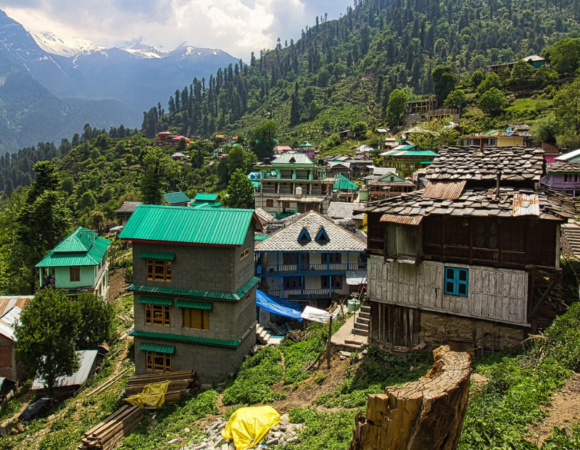
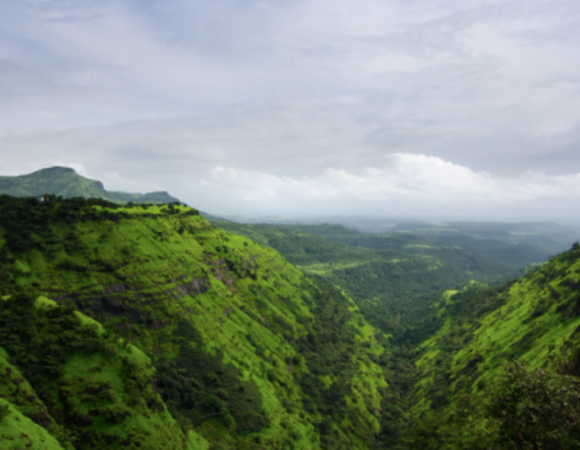
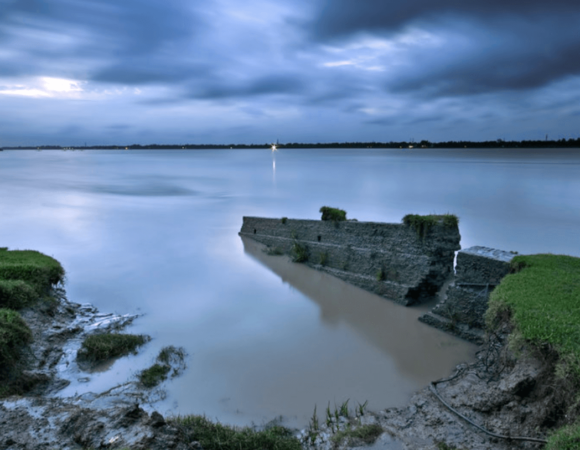
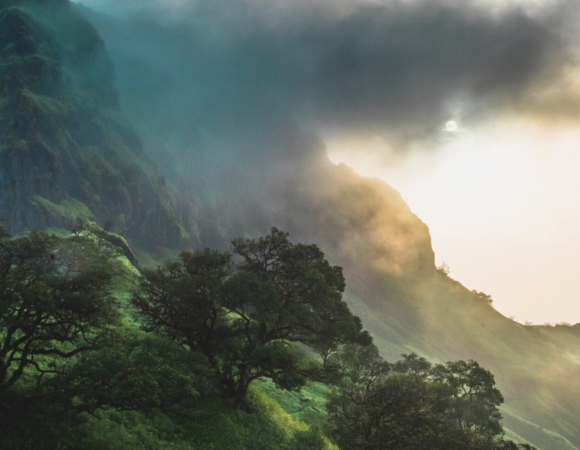
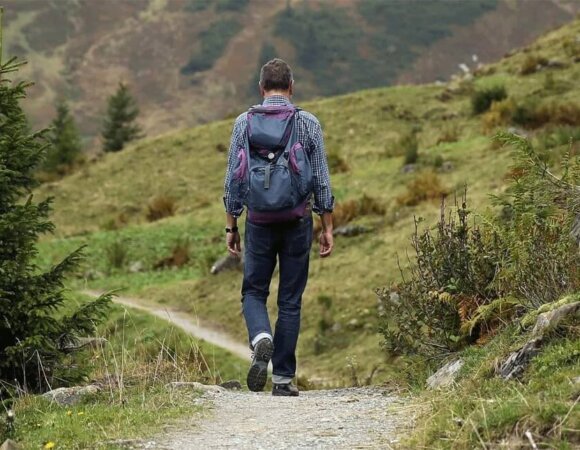
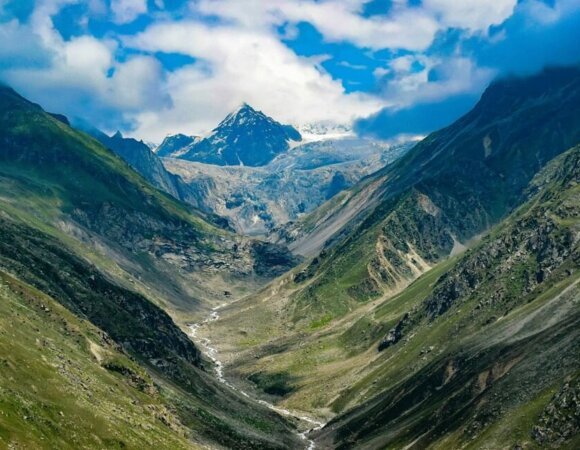
[…] Read more: What Is Eco Travel and Benefits […]
[…] Read more: What is eco-travel and its benefits […]
That is a really good tip especially to those fresh
to the blogosphere.
Simple but very precise info? Appreciate your sharing
this one.
A must read post!
Thank you Charla for your feedback .
Great❤️
Thanks